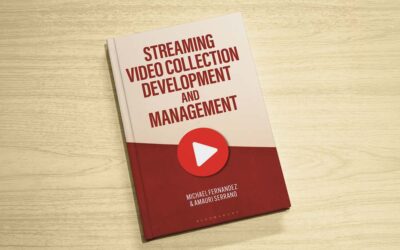Connectivism: Teaching Library Users How to Find Information
Lauren Hays
While I consider myself a social constructivist (someone who believes that knowledge is created through interaction with others and that knowledge is built on previous experience), one theory that I am particularly interested in is Connectivism. Connectivism is a learning theory for the modern technological age. The principles of Connectivism are:
- Learning and knowledge rests in diversity of opinions.
- Learning is a process of connecting specialized nodes or information sources.
- Learning may reside in non-human appliances.
- Capacity to know more is more critical than what is currently known
- Nurturing and maintaining connections is needed to facilitate continual learning.
- Ability to see connections between fields, ideas, and concepts is a core skill.
- Currency (accurate, up-to-date knowledge) is the intent of all connectivist learning activities.
- Decision-making is itself a learning process. Choosing what to learn and the meaning of incoming information is seen through the lens of a shifting reality. While there is a right answer now, it may be wrong tomorrow due to alterations in the information climate affecting the decision (Siemens, 2004, p. 5)
Applying the principles of connectivism in libraries
In practice, these principles have a lot of say about how we teach and work with people in our libraries. For me, the primary takeaway is the importance of teaching others how to find information. Secondly, it is vital that people understand information architecture and how knowledge is created and shared.
As someone who has taught a lot of 50-minute instruction sessions, and who currently teaches research courses, I observe that teaching people how to find information is an undervalued skill. I suspect many of you encounter the same thing. To demonstrate the value of information seeking skills, I have pointed people to the ideas expressed in Connectivism. Specifically, I explain how people need to be able to see connections between information sources (i.e., Scholarship as Conversation) and that as information landscapes change it is important that we all have the ability to adapt.
As you think about your instruction program, and what goals you have for it, I encourage you to dig into Connectivism. It may be a theory that underpins much of what you want to do. The principles can provide a framework for organizing content. Below is an example table of how you might use the principles as an organizational tool:
| Principle from Connectivism | Instruction Content |
| Learning is a process of connecting specialized nodes or information sources |
|
| Capacity to know more is more critical than what is currently known |
|
| Currency (accurate, up-to-date knowledge) is the intent of all connectivist learning activities. |
|
References
Siemens, G. (2004). Elearnspace. Connectivism: A learning theory for the digital age. eLearngSpace. http://citeseerx.ist.psu.edu/viewdoc/download?doi=10.1.1.1089.2000&rep=rep1&type=pdf
Lauren Hays
Never miss another post. Subscribe today!
Similar Posts
Growing Your Leadership Skills: 7 Tips for Special Librarians
Great library leaders aren’t born—they’re made through learning self-reflection and practice. Here are seven strategies to help you grow and lead with impact.
Keeping Up with Copyright and Generative AI: What Special Librarians Need to Know
As generative AI becomes more prevalent copyright law is evolving to address its impact. A new report from the U.S. Copyright Office provides guidance on what is (and isn’t) copyrightable.
Understanding Shadow AI: Risks Costs and Governance
AI can enhance search discovery and efficiency but unsanctioned adoption—known as “shadow AI”—can lead to budget overruns and compliance risks. Here’s how to evaluate AI pricing models and build a governance strategy that balances innovation with cost control.
Interview with an Author: Fernandez on Streaming Video Collection Development
As demand for streaming video in libraries grows so do the challenges of managing access budgets and licensing. Co-author Michael Fernandez shares key insights from his book “Streaming Video Collection Development and Management”.






Leave a Comment
Comments are reviewed and must adhere to our comments policy.
0 Comments